Explore Articles Filed Under: Plant Medicine

Of all the claims for the power of ayahuasca to heal sicknesses of various kinds, from cancer to asthma, the most popular current claim is that ayahuasca can — in some sense — cure addiction. There are certainly anecdotes, claims, and uncontrolled self-report studies that can at best be called preliminary. But I have seen no substantial scientific evidence that ayahuasca can successfully treat addictions. Here is why I am cautious about such claims.

Susun Weed is one of the best-known authorities on herbal medicine in North America. Her ideas on the nature of herbal medicine, the centrality of preventive care, the primary use of local and wild plants, and the way we must engage with the plant spirits — all of which she calls the Wise Woman Tradition — mirror in many ways the teachings of Amazonian ayahuasquera doña María Tuesta Flores. These two plant healers lived thousands of miles apart, and they never met. But they would have recognized each other instantly.
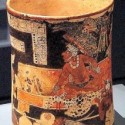
In 2001, a graduate student named Charles Zidar heard a lecture on the polychrome ceramics of the Classic Maya. The lecturer mentioned, in passing, that the botanical motifs with which many of these ceramics were decorated remained unidentified. This remark inspired Zidar, a natural historian and archaeologist, to focus his research on plants illustrated on Maya ceramics, culminating in the creation of a botanical resource database of the plants depicted in Classic Maya art, with the goal of rediscovering unknown or forgotten plants that were important to the ancient Maya. The initial results of this research have now been published.
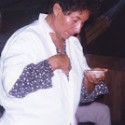
I have spoken before about my plant teacher doña María Luisa Tuesta Flores. She was born in September 1940, in the town of Lamas in the province of San Martín, and she died, the victim of sorcery, in July 2006. She had begun her healing career as an oracionista, a prayer healer, and, even after she became an ayahuasquera, her icaros, magic songs, remained inflected with the rhythms and melodies of prayers.

Northern Peru and southern Ecuador form a single culture area and share the same flora. Both are heirs of a regional plant healing tradition that goes back as far as the Cupisnique culture of the first millennium BC. But the two areas now show striking differences in plant knowledge and use. Plants used as medicine in southern Ecuador comprise only forty percent of the species used in northern Peru. Why is this?
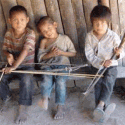
How important is traditional plant knowledge in the Amazon? According to a recent study among the Tsimane’ in Amazonian Bolivia, each standard deviation of maternal ethnobotanical knowledge increases the likelihood of good child health by more than fifty percent. And the study raises the question: What will be the cost — to the Tsimane’ and other indigenous peoples — if such ethnobotanical knowledge is lost?
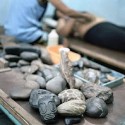
Significant among the tools used by shamans in the Upper Amazon are piedras, or piedras encantadas, magic stones, sometimes called just encantos, charms; such stones are called inkantos by the Machiguenga and Shipibo. My teacher doña María Tuesta told me that her father was a tabaquero who kept two magic stones, one male and one female, in a jar filled with a mixture of tobacco and water. When doña María was about eight years old, while her father still lived with the family, she saw him work with the stones twice. She could see the spirits of the stones: they both had very dark skin and long black hair.
In 1998, a man named Donald Topping wrote an article in the Bulletin of the Multidisciplinary Association for Psychedelic Studies entitled Ayahuasca and Cancer: One Man’s Experience. Topper was a retired professor of sociology and linguistics at the University of Hawai’i, a proponent of drug policy reform, an advocate for medical marijuana, and a founder of the Drug Policy Forum of Hawai’i. He had been diagnosed with colorectal cancer and been treated, apparently successfully, with surgery. But, in September 1996, he was told that the cancer had metastasized to his liver; the next month, the right half of his liver was surgically removed. A long-time believer in alternative medicine, he refused follow-up chemotherapy.

We have spoken, briefly, about Takiwasi, the Center for the Treatment of Drug and Alcohol Addiction and the Research of Traditional Medicines, located in Tarapoto, and its techniques for healing addiction using ayahuasca and other traditional Amazonian medicines. Takiwasi — the name means House that Sings — was founded and continues to be directed by French physician Jacques Mabit. Whatever you may think of his methods or his claimed results, there is no doubt that Mabit is a fascinating guy.
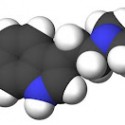
Many researchers have studied the biochemical interactions through which ayahuasca produces its psychoactive effect. The current wisdom is pretty clear. The companion plant — chacruna, sameruca, chagraponga — contains the potent hallucinogen dimethyltryptamine, and the ayahuasca vine contains ß-carboline derivatives that inhibit the monoamine oxidase-A enzyme that inactivates of the dimethyltryptamine of the companion plant. Thus the ayahuasca drink is reduced to dimethyltryptamine, its single active molecule.

Discussing the article:
Hallucinogens in Africa